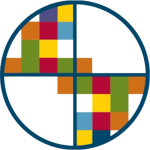Elementary and middle school students actively engage in the lifelong identity development process. They wrestle with fundamental questions such as “Who am I?” and “How do I fit into this community?” in their unique ways. The grappling that occurs during this powerful and critical process, helps our students gain an understanding of themselves, fostering a sense of purpose and self-acceptance.
For elementary school children, identity formation often involves exploring personal attributes and adopting labels based on concrete terms, as they are in the early stages of constructing their self-image. These concrete aspects of identity encompass elements such as their names, physical appearances, likes and dislikes, and basic preferences, all of which serve as building blocks for their self-concept. Understanding these fundamental aspects of their identity contributes to their sense of self and lays the foundation for their early connections to their peers and community.
In contrast, middle schoolers are navigating the path toward greater autonomy and independence, complicating their identity development. They are beginning to figure out who they are separate from their parents or role in the family. Additionally, they face the challenge of refining their self-concept as they explore personal and social identities. Personal identity may involve embracing specific labels, while social identity relates to how they define their roles with their peers, society, and culture. For tweens and teens, social identity plays a vital role in shaping self-image, impacting how students interpret their experiences. The narrative they construct around their identity can become a self-fulfilling prophecy. For example, if a child is known as “quiet,” their peers may respond by giving them space, reinforcing their social identity. Similarly, a student who sees themselves as a “star soccer player” may grapple with a loss of identity if they can no longer play the sport.
This dynamic is not exclusive to students but resonates with adults who often identify closely with their careers or family roles. As my last child is poised to attend college next year, I am grappling with my own identity shift to “empty nester.” I’m reminding myself that identities shift and change over time, and that this is a lifelong journey of self-exploration and adaptation.
Building positive self-identity in elementary and middle school students is achieved through open conversations, peer validation, nurturing relationships, and exposure to diverse role models with similar identities. At The Cooper School, we embrace an innovative approach to help students explore different identities within our classroom settings.
The power of words is essential in this process. We convey that students can actively shape and adopt various identities throughout their school day and beyond. When students envision themselves in different roles, they must align their actions with the responsibilities associated with those identities, showing respect for their peers and broader societal norms. In our classrooms, elementary and middle school students become “Mathematicians” during Math, “Authors” during Writing, “Researchers” or “Geologists” in Science, “Brave Explorers” at recess, and “Thoughtful Negotiators” at the Peace Table.
These identities instill in students a sense of responsibility, guiding their behavior and integrating them into the learning community. This approach also bridges the gap between the school environment and the “real world,” aligning with our progressive educational philosophy. By gently encouraging students to explore diverse identities, we guide them toward productive and positive self-perceptions, both in elementary and middle school.






